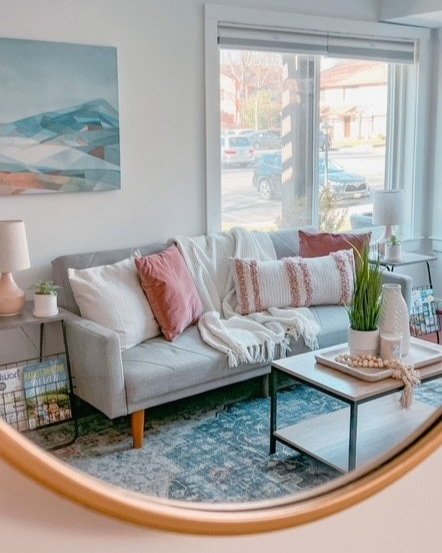design style of the month: transitional style
Transitional style is a popular and versatile design aesthetic that blends traditional and contemporary elements to create a timeless look. It strikes the perfect balance between old and new, offering a comfortable and inviting atmosphere that is both stylish and functional.
Key Elements of Transitional Style:
Neutral Color Palettes: Neutral colors such as beige, ivory, taupe, and gray are commonly used in transitional interiors. These colors create a sense of calm and sophistication, providing a neutral backdrop for other design elements.
Mix of Materials: Transitional style incorporates a variety of materials, including wood, metal, and glass. This mix of materials adds visual interest and texture to the space, creating a warm and inviting environment.
Furniture Selection: Furniture in transitional style is characterized by clean lines and simple silhouettes. Pieces are often upholstered in neutral fabrics with subtle textures, and wood finishes are typically medium to dark in tone.
Texture and Patterns: Texture plays a crucial role in transitional style, adding depth and dimension to the space. Textiles such as wool, linen, and silk are used to create a cozy and inviting atmosphere. Patterns are used sparingly, with geometric and floral designs being the most common choices.
Tips for Achieving Transitional Style:
Balance is Key: Achieving a sense of balance is essential in transitional style. Mix and match different elements to create a harmonious look.
Mix Old and New: Incorporate both old and new pieces into your design to create a curated and collected look.
Focus on Quality: Invest in high-quality furniture and accessories that will stand the test of time.
Add Personal Touches: Personalize your space with family photos, artwork, and other items that reflect your personality and style.
Three-Step Guide to Incorporating Transitional Style:
Assess Your Space: Take a look at your current furniture and decor to determine what can stay and what needs to be updated. Remove any items that don't fit the transitional style or that clash with the overall aesthetic.
Select Key Pieces: Choose furniture and accessories that reflect the transitional style. Look for pieces with clean lines, simple silhouettes, and neutral colors. Consider adding a mix of materials, such as wood, metal, and glass, to add visual interest.
Layer and Personalize: Add layers of texture and personal touches to make the space feel warm and inviting. Incorporate throw pillows, rugs, and curtains in different textures and patterns to add depth to the room.
Transitional style is a timeless and versatile design aesthetic that blends traditional and contemporary elements to create a comfortable and inviting atmosphere. By incorporating key elements such as neutral color palettes, a mix of materials, and a focus on quality, you can achieve a transitional look that is both stylish and functional. Whether you're updating your current space or starting from scratch, transitional style is a great choice for creating a warm and inviting home.


